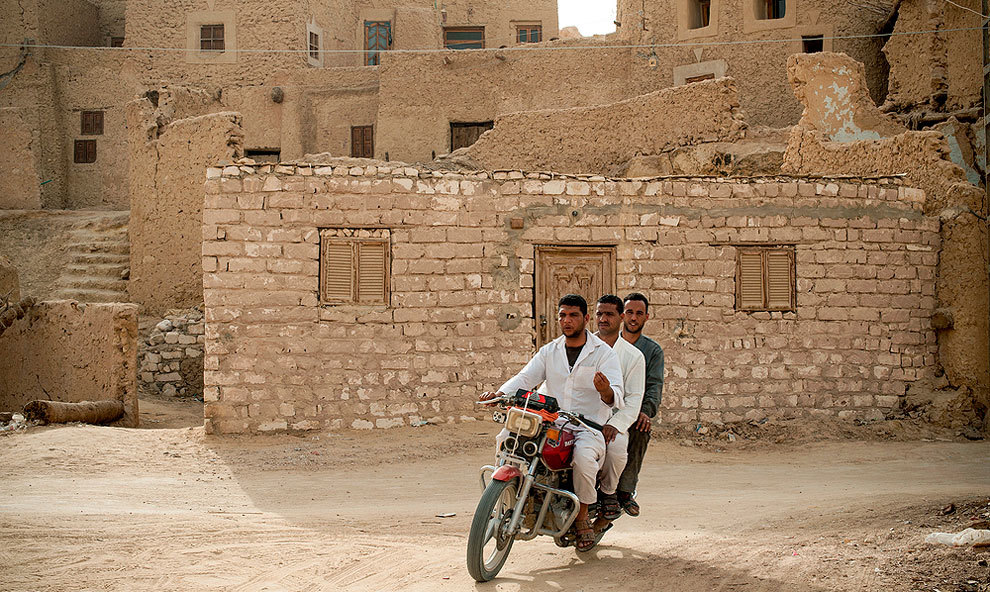CARLES GREU SIVERA (EFE)
Egypt
Saturday, 7 November 2020 - 02:28
Share on Facebook
Share on Twitter
Send by email
Comment
Archeology.
The details of the tomb of Tutankhamun on your computer and better than natural
History.
Ayutthaya, the lost city of Thailand
In a remote place in
the western desert of Egypt,
just 50 kilometers from the border with Libya, the Shali fortress was built about a thousand years ago using a mixture of salt and mud called
kershef
, a material used by locals to Insulate your homes from extreme desert temperatures.
However, the material could not withstand the
heavy rains
that in 1926 washed away the fortification in the same way that a wave engulfs a sand castle, leaving it in ruins and condemning the icon of
ancient Siwa
to oblivion
.
Built on a hill around 1,200 AD by
Berber tribes,
the Shali fortress had already been progressively abandoned in the 19th century when the Egyptian state took control of the area and integrated it into the Arab country.
The modernization brought about by the conquest encouraged the few hundred Berber families to build their new homes
outside the walls
, but reusing the materials of ancient Shali, severely weakening the fortification.
"The biggest challenge we faced was to get the
original plans
of the city, but we found
drawings and photographs
from a century ago that show what the streets of the fortress were like," says Ramy Ezmy, the architect responsible for the restoration, who has led two years of work.
Detail of the walls, reconstructed with mud, salt, palm and olive leaves.
For its
reconstruction
, the ancestral
kershef
technique has been used
, but modified with an addition
of palm and olive leaves
so that the walls are waterproof and thus avoid the disaster of a hundred years ago.
Ezmy assures that it was difficult to master the
kershef
to preserve the essence of the place, but the restorers had the help of Am Hamza, the only Berber who knew
the secret of the
original construction
material
.
A MUD HIVE
Now, Shali has reverted to its
beehive
shape
made of mud
with narrow passageways and 10-square-foot
rooms, date warehouses, small
squares for tribal gatherings and even a deep well that connects to one of the many aquifers that irrigate the oasis. .
In the past, the walls were raised about 35 meters to prevent attacks by invading tribes, the city had narrow streets less than a meter wide, and the houses rose vertically like
narrow towers.
At first Shali only had one access door, but with the passage of time and the growth of its population, two other entrances were opened, one of them dedicated
exclusively to women
due to the conservative Berber culture.
More than a century later, for the locals the reconstruction project brings not only the fortress but
its history
back to life
.
RESCUE LOCAL HISTORY AND COMMUNITY
"It is a dream for us to discover the
ancient town of the Siwa oasis.
I remember hearing from my grandparents how life was there and now we can live it," says the head of the Egyptian Ministry of Antiquities and Tourism in Siwa, Khaled Addoul.
One of its
mosques
has
also been restored
, a
bazaar
has been set up
for local artisans and a
maternity hospital
has even been created
to offer a better service to women in this enclave, which is a five-hour drive from the nearest urban center. .
Egyptians walking through one of the streets of Shali.
The project, which began in 2018, is part of an initiative of the Environmental Quality International Group company and has been funded by the
European Union
with more than half a million euros.
The objective is to maintain the Berber heritage in Siwa, the only place in all of Egypt where this
ethnic group, originally from the Maghreb,
can be found
, in
addition to promoting one of the most important engines for the local economy and for the survival of the inhabitants:
tourism .
"The work that has been done in Shali is excellent, because we already considered that the fortress was extinct," says excited Fathy Eleua, the leader of the Guasis Berber tribe, one of the eleven clans that make up the population of Siwa, which is estimated which is about 25,000 inhabitants.
According to the criteria of The Trust Project
Know more
Egypt
European Union
tourism
Seaside Finolhu Hotel Maldives or the extreme luxury of going through life barefoot
GuinnessThe king of jet skis and his record-breaking adventure: 3,600 kilometers in the open sea collecting plastics
United KingdomBourton-on-the-Water, the tiny English town that the Lilliputians would have loved
See links of interest
News
US elections
Translator
Programming
Films
Topics
2021 business calendar
Brighton and Hove Albion - Burnley
Live: Rafa Nadal - Pablo Carreño
Zalgiris Kaunas - Real Madrid
SV Werder Bremen - 1. FC Cologne
Barcelona - Real Betis, live

